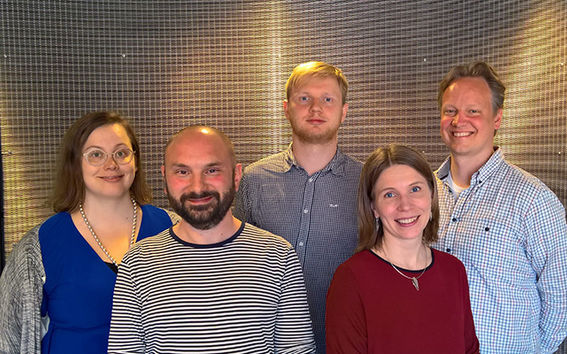Neuroscience conference on Twitter exceeded all expectations

Numerous successes have been experienced in connection with the conference on brain research organised on Twitter in April. The most recent news about the conference was the first prize awarded to it in the Liikutu tiedosta competition organised by Kaskas Media. The prize is awarded for exceptionally impactful science communication.
The actual conference exceeded all expectations, also in the light of numbers. The discussion was lively and resulted in more than 1 300 messages with the hashtag #brainTC and, according to a cautious estimate, the hashtag indeed reached up to 0.6 million Twitter users.
‘The presentations were condensed to a few tweets and were almost without exception very creative and worked extremely well, encouraging comments and debate. By way of comparison, the largest conference in the field of neuroscience gathers together 30 000 people and the #brainTC hashtag on Twitter reached 600 000 unique users’, summarises Tommi Himberg.
From an international point of view, a fairly large number of researchers use Twitter and the conference managed to attract influential keynote speakers who also have a considerable number of followers on Twitter. But there is still room for the conference to grow, especially outside Europe. The USA is an important influencer in the field of science, whereas the conference could have more benefits, for example, in South America and Africa where the resources are scarcer and people might have visa problems.
Interesting presentation methods instead of PowerPoint boredom
‘The speech given by Riitta Hari was one of the best in the conference because her topic on making brain function and thinking more flexible by means of art was well-chosen. She was able to combine the topics of interest of both the science community and the general public very skilfully and she used Twitter’s features in an excellent manner. Her way to tell a story was also very effective’, explains Koos Zevenhoven.
Only two presentations took advantage of videos, while emoji and symbols were more frequently used to shorten the text.
‘We found out during the coffee breaks that people participated in the conference live, without using scheduled tweets, and while engaged in very different situations: in the middle of a banquet or on a flight, on their way to another conference, and while spending time with their children. They were able to combine scientific participation successfully with their everyday lives’, adds Annika Hultén.
The objective of equality was also achieved: about one half of the participants were men and the other half women, while the majority of speakers in conferences is generally men. There were also participants from all stages of the academic career.
‘We received a lot of positive feedback for the Twitter conference. For example, the fresh and concise methods of presentation helped to avoid the boredom of PowerPoint presentations often associated with traditional conferences. Also, people from outside the field of neuroscience told us that they enjoyed the presentations a lot’, Juulia Suvilehto adds in the end.
Initially, the organisers of the conference – Enrico Glerean, Tommi Himberg, Annika Hultén, Juulia Suvilehto and Koos Zevenhoven – struggled slightly with the different time zones, partly also because the conference coincided with the switching of the clocks to summer time, but in the end everyone gave their presentations at the right time.
Further information:
Storify at brain.tc
Liikutu tiedosta (link in Finnish)
- Published:
- Updated:
Read more news

Get to know us: Associate Professor Maria Sammalkorpi
Sammalkorpi received her doctorate from Helsinki University of Technology 2004. After her defence, she has worked as a researcher at the Universities of Princeton, Yale and Aalto.
Aalto computer scientists in ICML 2024
Computer scientists in ICML 2024
Getting bacteria into line
Physicists use magnetic fields to manipulate bacterial behaviour